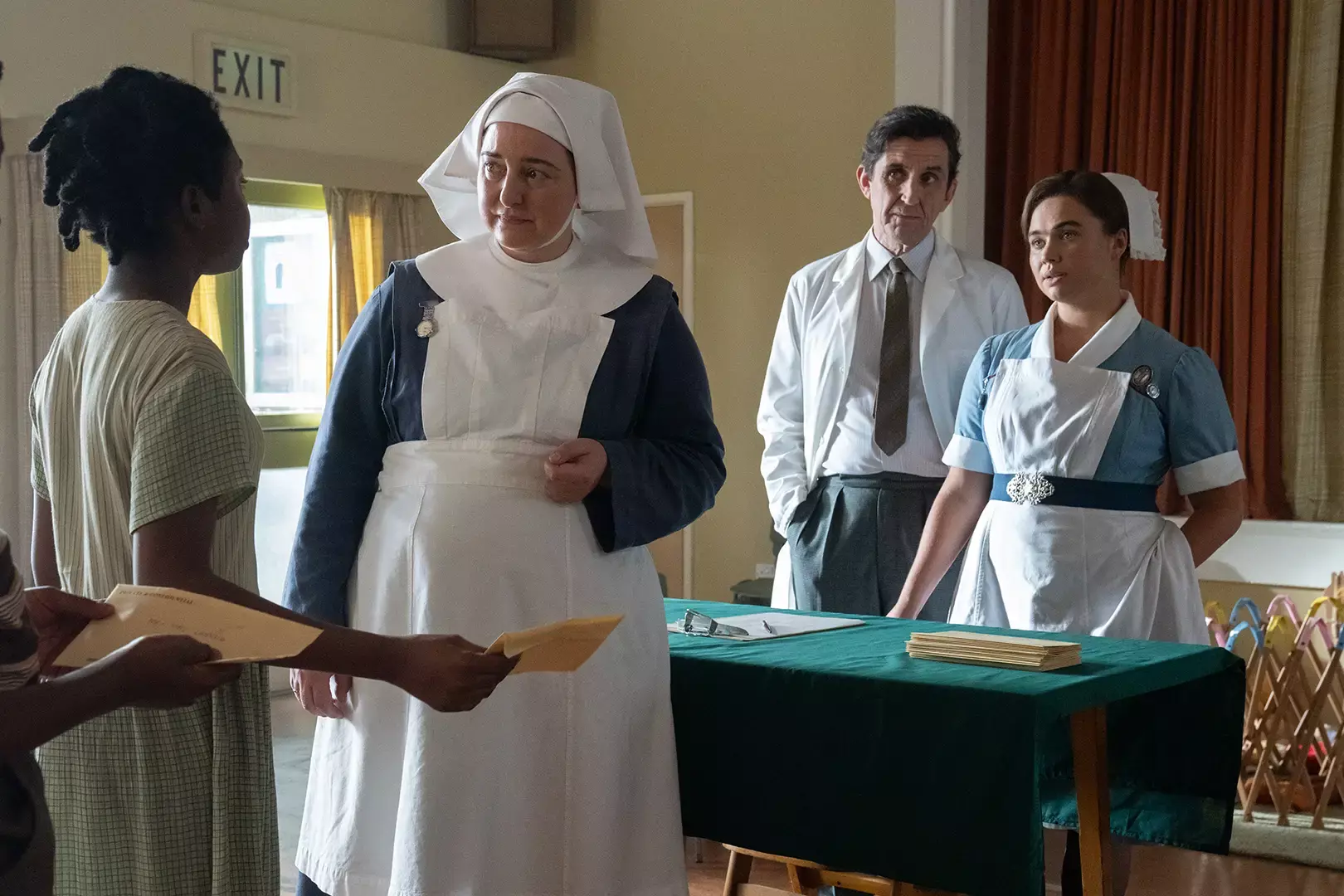In this week’s episode of Call the Midwife, we continue to follow the pupil midwives through their training at Nonnatus House. The experienced midwives are trying to nurture the self-confidence of the pupil midwives while they continue to work on their skills, which is very similar to what we do with our midwifery students today. This episode also highlights some of the stark realities of birth complications and public health issues, like tuberculosis (TB).
Pupil midwife Joyce has been struggling to feel comfortable with home birth, as she has experience within the hospital setting and is very used to higher-risk situations within the safety net of the hospital. The midwives choose to assign Joyce to care for Prue Stanton, a woman of “advanced maternal age” (what we today call pregnant people who are age 35 or older), who has essentially declined all of the midwives’ recommendations during her pregnancy. While it is recommended that Prue birth in the maternity home, she adamantly wants a home birth. Prue continues smoking cigarettes despite being counseled about the risks. These challenges really hit close to home for me as I have also had several experiences lately where families I am working with have declined recommendations that are the standard of care. This really stressed the importance of having good interpersonal skills as well as patience in midwifery. As I have mentioned many times before, my job is to provide education along with my recommendations, but ultimately I cannot make the decisions for them.
While midwives are experts in normal, low-risk care, it is so important to be aware of any abnormalities that might arise. After Prue gives birth, Joyce becomes concerned when examining Prue’s placenta and requests assistance from Trixie. However, Trixie is ultimately distracted and in a rush to get home. In the end, Trixie misses identifying an incomplete placenta, which leads to hemorrhage and infection for Prue.
If I’m being honest, I understood Trixie’s struggle in this episode. Sometimes when we work with students, it feels like they are always looking for something wrong. Most of the time, birth is normal, babies are healthy, and placentas are intact. However, we must never become so rigid in our idea that birth will always be normal that we ignore the blazing red flag right in front of us. Working with a student can force you to slow down, and in this case, could have encouraged Trixie to take a closer look at Prue’s placenta. Those extra 10 minutes spent examining the placenta, as well as Prue, could have saved her a life-threatening complication. This will definitely serve as a reminder for me in my current practice that doing things right is always better than just being able to do things faster. I was so glad that Joyce was able to stand up for herself when discussing this case with Sister Julienne and that she had the support of her fellow student, Rosalind.
In this episode, Sister Veronica, Dr. Turner, and Nancy also run a TB screening and vaccination clinic, which is where we meet two of the Chdozie children, Samuel and Esther. Midwifery jobs these days tend to be focused on reproductive health, pregnancy, birth, and postpartum care, but they can also include public health. This storyline really emphasized how public health was a regular aspect of midwifery care in England in the 1960s, especially in a lower-income area like Poplar. Today, midwives spend a lot of time talking about the prevention of diseases, available vaccinations, and ways to keep yourself and your community healthy.
As the team works with the Chdozie family, they discover that the family is living in poverty. Felix Chdozie has advanced TB and is unable to afford his medications. This, too, was a stark reminder of the social determinants of health that midwives today also navigate. So often, we have to consider the cost of treatments, as well as whether or not our patients have the transportation or time off work to be able to attend their recommended appointments.
Modern-day midwifery continues to grapple with similar challenges and responsibilities depicted in the episode. Midwifery education has changed over the years as we have incorporated evidence-based practice, new technologies, learning to assist in cesarean sections, as well as the shift to having the majority of births in a more medicalized, hospital setting. Despite the changes, the core values of compassion, advocacy, and personalized care remain unchanged, and that is something that I love seeing shine through in every episode of Call the Midwife.
